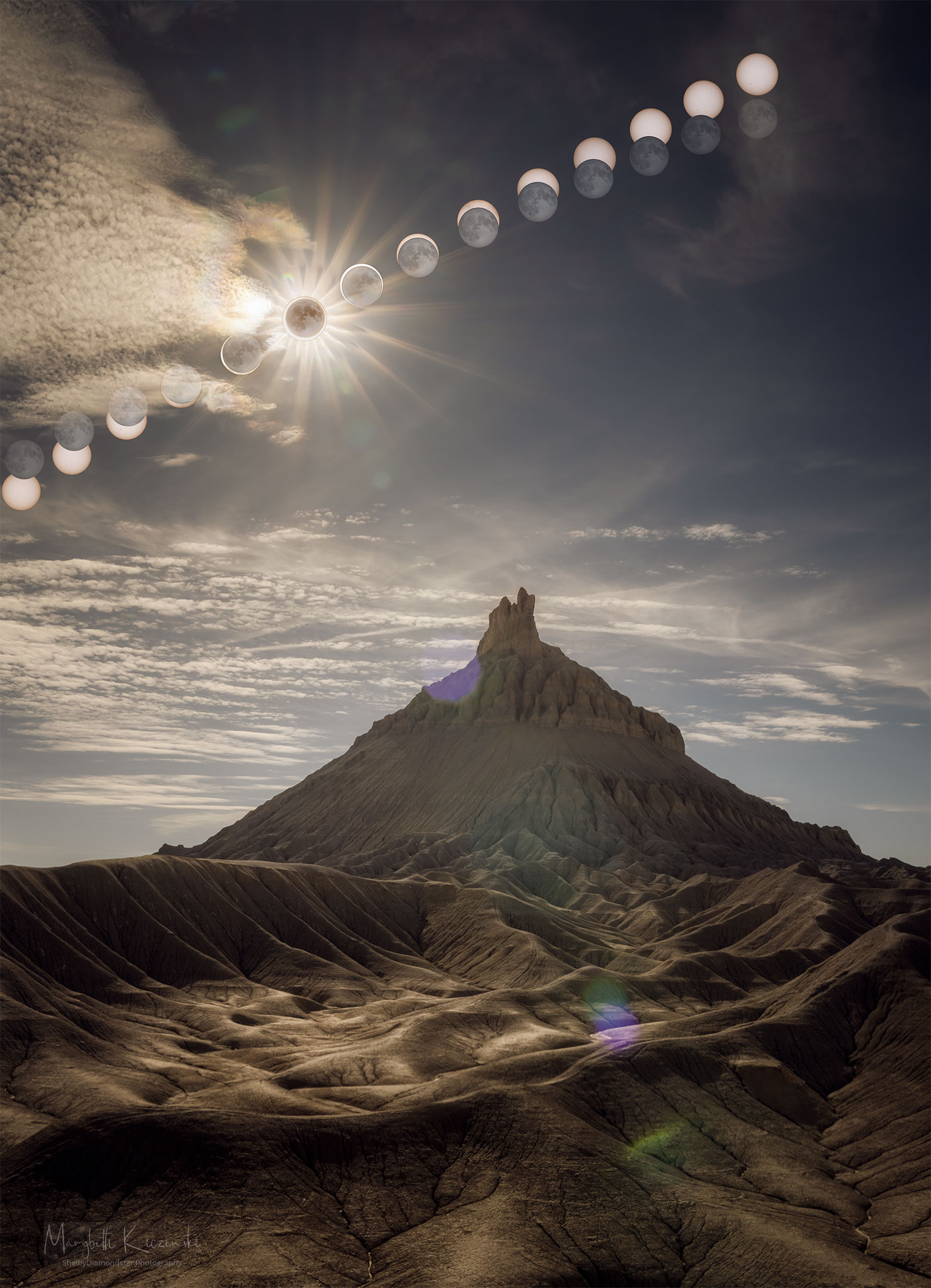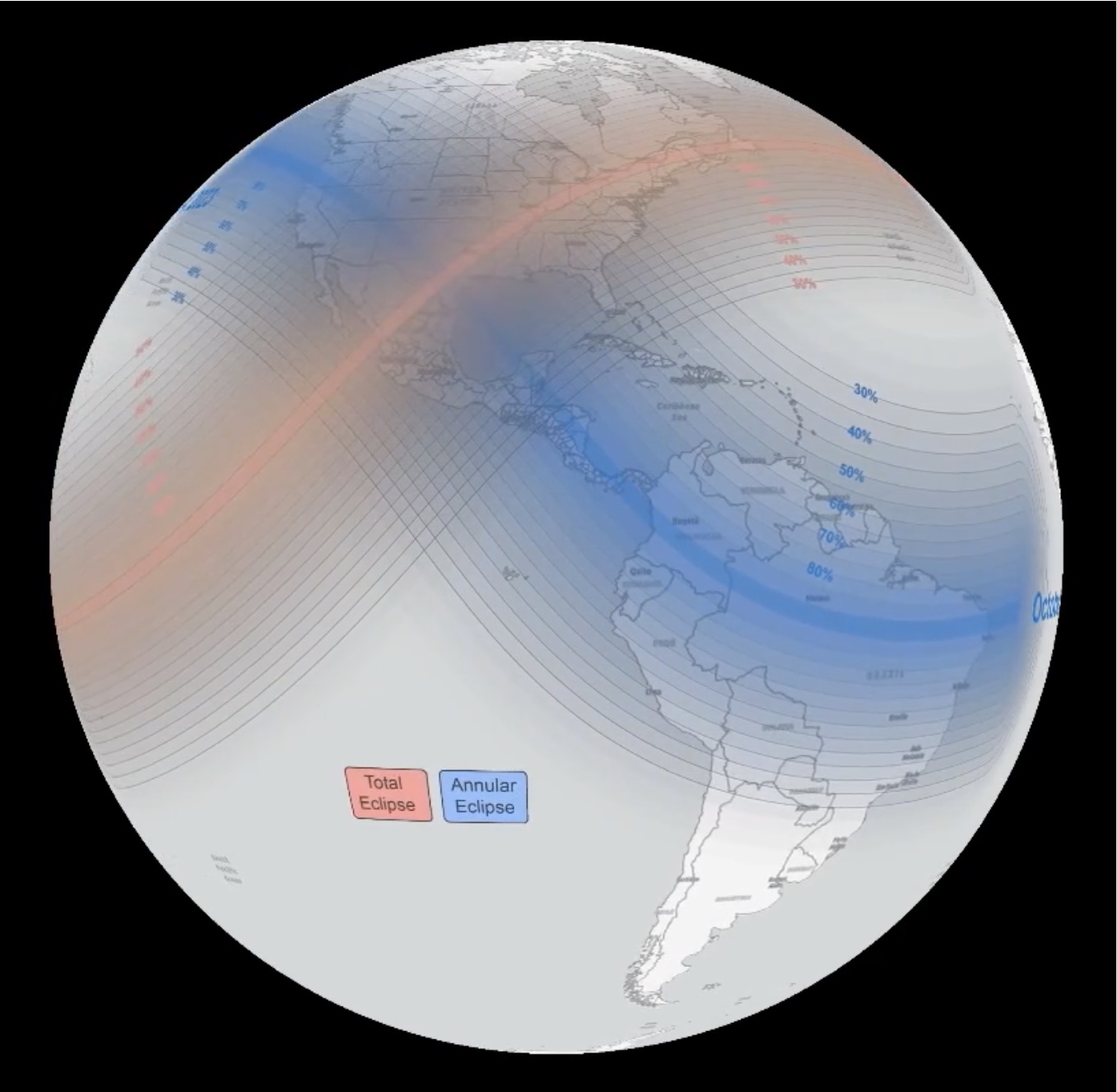
Explanation: Along a narrow path crossing southern South America through Chile and Argentina, the final New Moon of 2020 moved in front of the Sun on December 14 in the year's only total solar eclipse. Within about 2 days of perigee, the closest point in its elliptical orbit, the New Moon's surface is faintly lit by earthshine in this dramatic composite view. The image is a processed composite of 55 calibrated exposures ranging from 1/640 to 3 seconds. Covering a large range in brightness during totality, it reveals the dim lunar surface and faint background stars, along with planet-sized prominences at the Sun's edge, an enormous coronal mass ejection, and sweeping coronal structures normally hidden in the Sun's glare. Look closely for an ill-fated sungrazing Kreutz family comet (C/2020 X3 SOHO) approaching from the lower left, at about the 7 o'clock position. In 2021 eclipse chasers will see an annular solar eclipse coming up on June 10. They'll have to wait until December 4 for the only total solar eclipse in 2021 though. That eclipse will be total along a narrow path crossing the southernmost continent of Antarctica. from https://apod.nasa.gov/apod/astropix.html

We are excited to release five new datasets for SOS and SOSx about the upcoming solar eclipses that will be crossing North America in the next eight months! Up first is the annular solar eclipse on October 14, 2023, followed by the total solar eclipse on April 8, 2024. The dataset shown here displays the paths for both eclipses. Along with the datasets, we have also released a live program that ties the datasets together and includes some solar eclipse activities. Check it out here: https://sos.noaa.gov/.../celestial-dance-2023-&-2024.../
Be sure to download the SOS Explorer mobile app to see all the datasets for yourself!
Rudolf Steiner
“Under normal conditions the evil impulses of will which are sent out into the cosmos by human beings are, as it were, burned up and consumed by the rays of the sun, so that they can injure only man himself, but can do no universal harm. When, however, there is an eclipse of the sun, opportunity is given for the evil which is willed on earth to spread over the cosmos. An eclipse is a physical event behind which there lies a significant spiritual reality.
Eclipses of the sun and moon, recurring as they do in the course of every year, may really be looked upon as “safety-valves.” A safety-valve is there to avert danger, to provide an outlet for something or other — steam, for instance — at the right moment. One of the safety-valves which makes its appearance in the cosmos and to which we give the name of a solar eclipse, serves the purpose of carrying out into space in a Luciferic way, the evil that spreads over the earth, in order that evil may work havoc in a wider, less concentrated sphere." [Rudolf Steiner]
See Also
FORCES DERIVED FROM INTRA-ATOMIC ENERGY - MOLECULAR FORCES, ELECTRICITY, SOLAR HEAT, ETC.
Part 22 - Solar Rings and Planetary Formation
Primary Solar Ray
PSI Solar Concentrator
Robert Scragg Solar Reactor Engine
Solar Energy
solar force
solar heat
solar plexus
solar system
solar wind
SolarRingsChart1
SolarRingsChart2
SolarRingsChart3
SolarRingsChart4
SolarRingsChart5
SolarRingsChart6
sun
